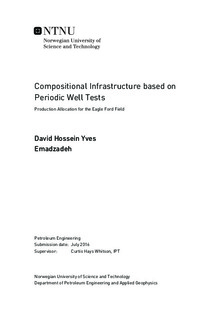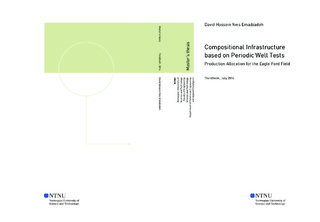| dc.description.abstract | This study suggests a way of building an as-accurate-as-possible compositional infrastructure
to generate continuous wellstreams, from periodic well tests. It also studies the influence of well test measurements on the reservoir and production management. Since well tests are recorded at varying separator temperature and pressure, the measurements are not consistent with each other, and may lead to misinterpretations, wrong decisions, which would result in a lowered production, and ultimately to less incomes.
The Well Test Conversion module is used to estimate the actual reservoir wellstream, considering it as molar compositional rates. From this point of view, a better understanding of the flow is possible. In this model, the importance of accurate wellstream generations is emphasized. By reprocessing at any separator conditions, all the well test measurements are simulated, and the comparison between the measurements is more meaningful. The deviations due to the varying separator conditions are flagged. Once the effect of the separator conditions has been removed, actual variations of the fluid properties can be studied.
The continuous data are limited to rate measurements, while the periodic well tests are
richer in information. A method is proposed to feed the continuous production data with molar
rates, generated from periodic well tests. This algorithm produces a database of continuous
wellstreams that can be sent through the actual process facilities. In this work, a compositional description of the production is discussed. The data characterizing the production can then be studied (API density and Shrinkage Factor among others) from the simulations. This leads to discussions about the reservoir behaviour, and supports an improved production management.
Once the compositional infrastructure is built and the facilities on surface are modelled, an enhanced back-allocation of the production can be achieved. | |

